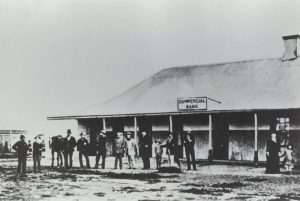There are numerous reasons why Decision Making Models are used. The popular notion is that there are some people that simply can't make decisions, just as there is a popular notion that some people are natural "decision makers". The truth is, it doesn't matter how complex or simple a decision, the truth probably lies somewhere in the middle... with the need for a model often dependent upon the complexity or importance of the decision, and the associated stress that may apply in the execution of a solution.
Every business action, process, or interaction is a potential commercial threat. Because of the competitive nature of some businesses, not taking certain actions might also be a threat (think of the marketing opportunities that you haven't gotten around to yet).
Our application of the decision model is part of a broader package that encompasses a modified version of the aviation-based Threat and Error Management (TEM) principles (not totally unlike traditional "risk management"). The aviation TEM works on the basis that threats are assessed, and models be put in place to handle error management before they lead to a situation where they might compromise safety (or lead to an "undesired state"). While threats are fluid in nature - requiring a proactive appraisal of each sortie - other threats are identified and documented by way of a Line Operations Safety Audit (LOSA). While risk management is in no way exclusive to aviation, the strict adherence to standard operating procedures makes the industry the perfect example of how regimented operational frameworks might identify and mitigate risk. When we work with a business we provide an Operational Audit (not entirely dissimilar to a Risk based Internal Audit) with an objective take on internal processes that might compromise on any aspect of business growth. The decision making models include their own TEM considerations, but the models are often employed before any action results in a commercial risk.
Out of all the models I've used in aviation, the police force, fire service, and a number of my own and other businesses, the FORDEC model - for better or worse - seems to be one that I keep coming back to. It's described below as an example of how it might be incorporated into a company manual.
While it's unlikely a small business will refer to a model for even the most significant risk assessments, they do make for an excellent framework in meetings (or online discussions) with larger groups of people.
The FORDEC Decision Making Model
The following is a brief and very basic overview of FORDEC and how it might be used to guide group discussions.
Facts
- Gather all relevant Facts. What is the full extent of the problem?
- A problem which has been well defined at best usually suggests its own solution and at worst prevents a team from going down the wrong path.
- It is important to stay focused on defining and understanding the problem rather than rushing to judgement.
- There will often be more than just the one problem requiring a solution and they will all need to be carefully considered and then dealt with in order of priority.
Options
- What options are available?
- Define the different options you have, considering that there may be several possible options to facilitate a safe outcome.
- Time can be considered as; critical, available and required. There are very few problems that require immediate action. In the vast majority of cases a considered and well developed plan is going to lead to a safe optimized resolution.
- The use of open questions can assist in keeping focused: "What do you think about... ?" or "what are the consequences of ...?".
Risk/Benefit
- What are the risks and benefits associated with each option?
- What are the PR and commercial consequences?
- Commercial, legal, liability, and public relations related risks.
- Cost/benefit analysis of each option.
- With the given situation, what are the assessed risks in pursuing a course of action weighted against the perceived benefit?
Decision
- Which option(s) have you decided on?
- After spending an appropriate amount of time on the first three steps, a manager must eventually make a decision.
- This is the step that many people instinctively leap to, however correct application of a management model will lead to a process driven solution that will have initially focused on accurately defining the problem, analyzing the options before finally deciding on the solution.
- An individual that is ultimately accountable for the decision needs to be nominated (usually a manager).
Execute
- Execute the selected option. Once the decision has been made, the plan must be put into action.
Communicate
- Communicate your intentions. If it's a public decision, consider using email, social media, and your blog.
- Once the plan has been executed, the manager must ensure that his intentions are communicated to all interested parties and the team are appropriately educated to handle potential resistance.
In the case of enterprise-level crisis management, it may be best to have a non-manager lead discussions to ensure discussions aren't guided, a bias isn't introduced, or a groupthink type scenario doesn't develop.
The Need For Speed
In the world of social media, it doesn't take long for brand damage to take effect, and the window of opportunity for business to respond to a crisis is small. It's in these cases where a decision making model might help in avoiding the rush to judgement (or solution). A decision making model should be integral component of any social media guidance manual - as it should be for any company operations manual.
Considerations
While this quick article tends to address FORDEC as a model to re-actively address a potential crisis, they can and usually should be used to proactively assess policy before its introduced into a company manual.
The risk/benefit analysis should almost always be considered for policy guidance when a business has multiple offices or operates as a franchise (any perceived risk or benefit is often determined by geography or demographic).








